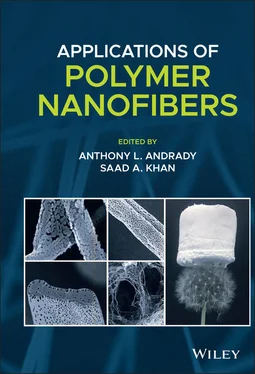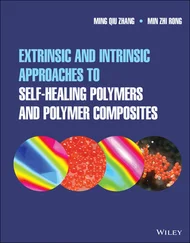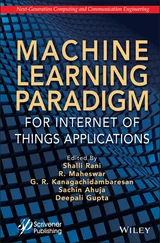Applications of Polymer Nanofibers
Здесь есть возможность читать онлайн «Applications of Polymer Nanofibers» — ознакомительный отрывок электронной книги совершенно бесплатно, а после прочтения отрывка купить полную версию. В некоторых случаях можно слушать аудио, скачать через торрент в формате fb2 и присутствует краткое содержание. Жанр: unrecognised, на английском языке. Описание произведения, (предисловие) а так же отзывы посетителей доступны на портале библиотеки ЛибКат.
- Название:Applications of Polymer Nanofibers
- Автор:
- Жанр:
- Год:неизвестен
- ISBN:нет данных
- Рейтинг книги:4 / 5. Голосов: 1
-
Избранное:Добавить в избранное
- Отзывы:
-
Ваша оценка:
- 80
- 1
- 2
- 3
- 4
- 5
Applications of Polymer Nanofibers: краткое содержание, описание и аннотация
Предлагаем к чтению аннотацию, описание, краткое содержание или предисловие (зависит от того, что написал сам автор книги «Applications of Polymer Nanofibers»). Если вы не нашли необходимую информацию о книге — напишите в комментариях, мы постараемся отыскать её.
Explore a comprehensive review of the practical experimental and technological details of polymer nanofibers with a leading new resource Applications of Polymer Nanofibers
Applications of Polymer Nanofibers
Applications of Polymer Nanofibers
Applications of Polymer Nanofibers — читать онлайн ознакомительный отрывок
Ниже представлен текст книги, разбитый по страницам. Система сохранения места последней прочитанной страницы, позволяет с удобством читать онлайн бесплатно книгу «Applications of Polymer Nanofibers», без необходимости каждый раз заново искать на чём Вы остановились. Поставьте закладку, и сможете в любой момент перейти на страницу, на которой закончили чтение.
Интервал:
Закладка:
91 Qi, H., Hu, P., Xu, J., and Wang, A. (2006). Encapsulation of drug reservoirs in fibers by emulsion electrospinning: morphology characterization and preliminary release assessment. Biomacromolecules 7 (8): 2327–2330.
92 Qin, C.‐C., Duan, X.‐P., Wang, L. et al. (2015). Melt electrospinning of poly(lactic acid) and polycaprolactone microfibers by using a hand‐ operated Wimshurst generator. Nanoscale: 16611–16615.
93 Ramakrishna, S. (2005). Electrospinning process. In: An Introduction to Electrospinning and Nanofibers (ed. S. Ramakrishna), 90–154. World Scientific.
94 Reneker, D.H. and Chun, I. (1996). Nanometre diameter fibres of polymer, produced by electrospinning. Nanotechnology 7 (3): 216–223.
95 Rutledge, G.C. and Fridrikh, S.V. (2007). Formation of fibers by electrospinning. Advanced Drug Delivery Reviews 59 (14): 1384–1391.
96 Saquing, C.D., Tang, C., Monian, B. et al. (2013). Alginate‐polyethylene oxide blend nanofibers and the role of the carrier polymer in electrospinning. Industrial and Engineering Chemistry Research 52: 8692–8704.
97 Sarkar, K., Ghalia, M.B., Wu, Z., and Bose, S.C. (2009). A neural network model for the numerical prediction of the diameter of electro‐spun polyethylene oxide nanofibers. Journal of Materials Processing Technology 209 (7): 3156–3165.
98 Schaefer, K., Thomas, H., Dalton, P., and Moeller, M. (2007). Nano‐fibres for filter materials. In: Multifunctional Barriers for Flexible Structure, 125–138. Heidelberg: Springer, Berlin.
99 Schiffman, J.D. and Schauer, C.L. (2008). A review: electrospinning of biopolymer nanofibers and their applications. Polymer Reviews 48 (2): 317–352.
100 Seo, J.M., Arumugam, G.K., Khan, S., and Heiden, P.A. (2009). Comparison of the effects of an ionic liquid and other salts on the properties of electrospun fibers, 2 – poly(vinyl alcohol). Macromolecular Materials and Engineering 294 (1): 45–53.
101 Shenoy, S.L., Bates, W.D., Frisch, H.L., and Wnek, G.E. (2005). Role of chain entanglements on fiber formation during electrospinning of polymer solutions: good solvent, non‐specific polymer‐polymer interaction limit. Polymer (Guildf) 46 (10): 3372–3384.
102 Shenoy, S.L., Bates, W.D., and Wnek, G. (2005). Correlations between electrospinnability and physical gelation. Polymer (Guildf) 46 (21): 8990–9004.
103 Singer, J.C., Giesa, R., and Schmidt, H.W. (2012). Shaping self‐assembling small molecules into fibres by melt electrospinning. Soft Matter 8 (39): 9972–9976.
104 Singer, J.C., Ringk, A., Giesa, R., and Schmidt, H.W. (2015). Melt electrospinning of small molecules. Macromolecular Materials and Engineering 300 (3): 259–276.
105 Singh, G., Bittner, A.M., Loscher, S. et al. (2008). Electrospinning of diphenylalanine nanotubes. Advanced Materials 20 (12): 2332–2336.
106 Son, W.K., Youk, J.H., Lee, T.S., and Park, W.H. (2004). The effects of solution properties and polyelectrolyte on electrospinning of ultrafine poly(ethylene oxide) fibers. Polymer (Guildf) 45 (9): 2959–2966.
107 Stepanyan, R., Subbotin, A., Cuperus, L. et al. (2014). Fiber diameter control in electrospinning. Applied Physics Letters 105 (17): 173105.
108 Stepanyan, R., Subbotin, A.V., Cuperus, L. et al. (2016). Nanofiber diameter in electrospinning of polymer solutions: model and experiment. Polymer (United Kingdom) 97: 428–439.
109 Stojanovska, E., Canbay, E., Pampal, E.S. et al. (2016). A review on non‐electro nanofibre spinning techniques. RSC Advances 6 (87): 83783–83801.
110 Sukigara, S., Gandhi, M., Ayutsede, J. et al. (2003). Regeneration of Bombyx mori silk by electrospinning – Part 1: Processing parameters and geometric properties. Polymer (Guildf) 44 (19): 5721–5727.
111 Tang, C., Ozcam, A.E., Stout, B., and Khan, S.A. (2012). Effect of pH on protein distribution in electrospun PVA/BSA composite nanofibers. Biomacromolecules 13 (5): 1269–1278.
112 Teo, W.E. and Ramakrishna, S. (2006). A review on electrospinning design and nanofibre assemblies. Nanotechnology 17 (14): R89–R106.
113 Teo, W.‐E., Inai, R., and Ramakrishna, S. (2011). Technological advances in electrospinning of nanofibers. Science and Technology of Advanced Materials 12 (1): 013002.
114 Thavasi, V., Singh, G., and Ramakrishna, S. (2008). Electrospun nanofibers in energy and environmental applications. Energy & Environmental Science 1 (2): 205.
115 Thompson, C.J., Chase, G.G., Yarin, A.L., and Reneker, D.H. (2007). Effects of parameters on nanofiber diameter determined from electrospinning model. Polymer (Guildf) 48 (23): 6913–6922.
116 Thoppey, N.M., Gorga, R.E., Bochinski, J.R., and Clarke, L.I. (2012). Effect of solution parameters on spontaneous jet formation and throughput in edge electrospinning from a fluid‐filled bowl. Macromolecules 45 (16): 6527–6537.
117 Uyar, T. and Besenbacher, F. (2008). Electrospinning of uniform polystyrene fibers: the effect of solvent conductivity. Polymer (Guildf) 49 (24): 5336–5343.
118 Vigh, T., Horváthová, T., Balogh, A. et al. (2013). Polymer‐free and polyvinylpirrolidone‐based electrospun solid dosage forms for drug dissolution enhancement. European Journal of Pharmaceutical Sciences 49 (4): 595–602.
119 Wang, L., Pai, C.L., Boyce, M.C., and Rutledge, G.C. (2009). Wrinkled surface topographies of electrospun polymer fibers. Applied Physics Letters 94 (15): 1–4.
120 Wang, Y., Wang, B., Wang, G. et al. (2009). A novel method for preparing electrospun fibers with nano‐/micro‐scale porous structures. Polymer Bulletin 63 (2): 259–265.
121 Wang, X., Bazuin, C.G., and Pellerin, C. (2015). Effect of small molecule hydrogen‐bond crosslinker and solvent power on the electrospinnability of poly(4‐vinyl pyridine). Polymer (United Kingdom) 57: 62–69.
122 Wang, C., Wang, Y., and Hashimoto, T. (2016). Impact of entanglement density on solution electrospinning: a phenomenological model for fiber diameter. Macromolecules 49 (20): 7985–7996.
123 Wang, N., Si, Y., Yu, J. et al. (2017). Nano‐fiber/net structured PVA membrane: effects of formic acid as solvent and crosslinking agent on solution properties and membrane morphological structures. Materials and Design 120: 135–143.
124 Wannatong, L., Sirivat, A., and Supaphol, P. (2004). Effects of solvents on electrospun polymeric fibers: preliminary study on polystyrene. Polymer International 53 (11): 1851–1859.
125 Wei, Z., Zhang, Q., Wang, L. et al. (2013). Porous electrospun ultrafine fibers via a liquid‐liquid phase separation method. Colloid and Polymer Science 291 (5): 1293–1296.
126 Wendorff, J.H., Agarwal, S., and Greiner, A. (2012). Electrospinning: Materials, Processing, and Applications. Weinheim: Wiley‐VCH Verlag GmbH & Co. KGaA.
127 Xiaoqiang, L., Chen, S., Hua, Q. et al. (2017). Fabrication of fluorescent poly(l‐lactide‐co‐caprolactone) fibers with quantum‐dot incorporation from emulsion electrospinning for chloramphenicol detection. Journal of Applied Polymer Science 134 (11): 44584 (7 pp).
128 Xu, X., Zhuang, X., Chen, X. et al. (2006). Preparation of core‐sheath composite nanofibers by emulsion electrospinning. Macromolecular Rapid Communications 27 (19): 1637–1642.
129 Yang, Y., Li, X., Cui, W. et al. (2008). Structural stability and release profiles of proteins from core‐shell poly(dl‐lactide) ultrafine fibers prepared by emulsion electrospinning. Journal of Biomedical Materials Research Part A 86 (2): 374–385.
130 Yang, Y., Li, X., Qi, M. et al. (2008). Release pattern and structural integrity of lysozyme encapsulated in core‐sheath structured poly(dl‐lactide) ultrafine fibers prepared by emulsion electrospinning. European Journal of Pharmaceutics and Biopharmaceutics 69 (1): 106–116.
131 Yarin, A.L. (2011). Coaxial electrospinning and emulsion electrospinning of core‐shell fibers. Polymers for Advanced Technologies 22 (3): 310–317.
Читать дальшеИнтервал:
Закладка:
Похожие книги на «Applications of Polymer Nanofibers»
Представляем Вашему вниманию похожие книги на «Applications of Polymer Nanofibers» списком для выбора. Мы отобрали схожую по названию и смыслу литературу в надежде предоставить читателям больше вариантов отыскать новые, интересные, ещё непрочитанные произведения.
Обсуждение, отзывы о книге «Applications of Polymer Nanofibers» и просто собственные мнения читателей. Оставьте ваши комментарии, напишите, что Вы думаете о произведении, его смысле или главных героях. Укажите что конкретно понравилось, а что нет, и почему Вы так считаете.












